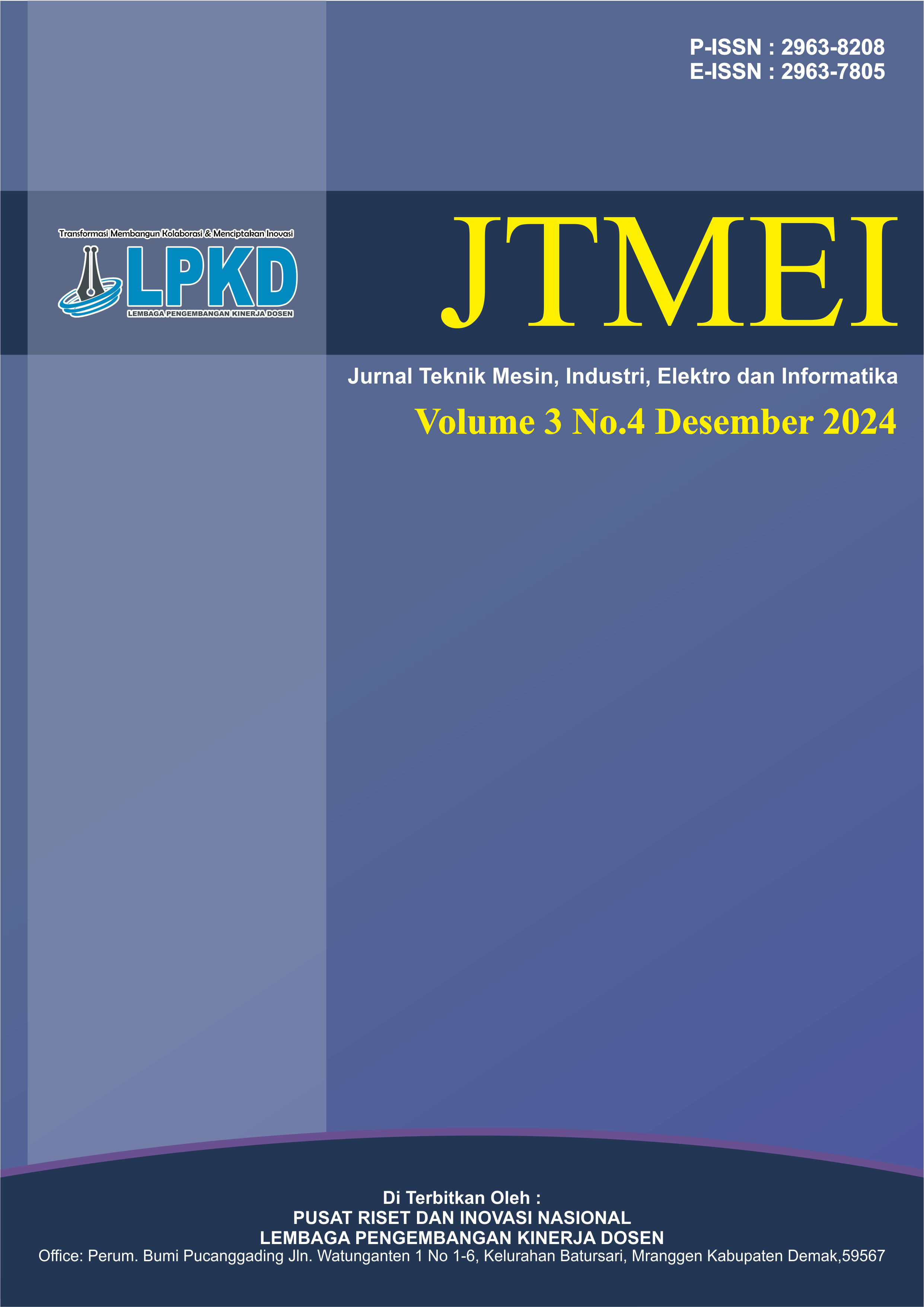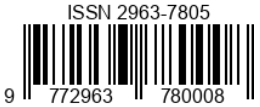Sifat Mekanik Komposit Serat Eceng Gondok dengan Filler Cu-Zn dan MgO untuk Kampas Rem Sepeda Motor
DOI:
https://doi.org/10.55606/jtmei.v3i4.4399Keywords:
Water hyacinth fiber, composite, brake liningAbstract
Brake linings are an important component in the vehicle braking system, but the use of hazardous materials such as asbestos causes environmental pollution. This research aims to analyze the effect of water hyacinth fiber content in composites with Cu-Zn and MgO fillers on brake lining wear and hardness, as a more environmentally friendly alternative. The experimental method was used with variations in the composition of water hyacinth fiber: brass powder: magnesium oxide powder: epoxy resin of 10%:40%:20%:30%, 15%:40%:20%:25%, 20%:40%: 20%:20%, and 25%:40%:20%:15%. The manufacturing process involves a compaction pressure of 2 tons for 10 minutes and sintering at a temperature of 200°C for 30 minutes. Vickers hardness testing refers to the ASTM E384 standard and wear testing refers to the ASTM G99-95a standard. The results showed that the highest hardness was obtained with a composition of 10% water hyacinth fiber (245.26 Kgf/mm2), with a composition of 15% water hyacinth fiber (240.88 Kgf/mm2), with a composition of 20% water hyacinth fiber (215.84 Kgf /mm2), and a water hyacinth fiber composition of 25% (194.48 Kgf/mm2). The lowest wear test results were at a composition of 10% water hyacinth fiber (0.00212 mm²/kg), at a composition of 15% water hyacinth fiber (0.00242 mm²/kg), at a composition of 20% water hyacinth fiber (0.00295 mm²/kg), and with a composition of 25% water hyacinth fiber (0.0031 mm²/kg). This shows that increasing the percentage of water hyacinth fiber can reduce the hardness value and increase brake lining wear.
Downloads
References
Bagaskara, A. (2019). Pengaruh serat eceng gondok sebagai penguat komposit kampas rem terhadap sifat mekanis. Jurnal Teknik Mesin MERC, 2(2), 2.
Bagir, A., & Pradana, G. E. (2011). Pemanfaatan serat eceng gondok sebagai bahan baku pembuatan komposit. Jurnal Teknik, 1-2.
Iman, N. (2020). Karakteristik komposit partikel arang kayu akasia bermatrik epoxy sebagai salah satu alternatif kampas rem non-asbestos. ROTASI, 22(1), 7-13.
Jefferje, B., Heyleys, & Zylyon. (2003). Composite application using coir fibres in Sri Lanka. Final Report of Fast Track Project from Common Fund for Commodities. Delft University of Technology.
Prabowo, T. A. Analisis performa kampas rem non asbes variasi serat eceng gondok 1 gram, 2 gram, 3 gram dengan matrik phenolic resin. [Skripsi].
Santoso, S. (2013). Studi pemanfaatan campuran serbuk tempurung kelapa aluminium sebagai material alternatif kampas rem sepeda motor non-asbestos. Jurnal Nosel, 2(1).
Saputra, A., & Bagus. (2023). Pengaruh campuran serbuk tulang sapi dan arang tempurung kelapa pada karakteristik kampas rem komposit. [Skripsi].
Suhartoyo, A., Pramono, C., & Setyawan, D. (2019). Pengaruh penambahan serat eceng gondok terhadap sifat mekanik kampas rem. Jurnal Teknik Mesin, 7(2), 56-63.
Sutikno, A., Pramono, C., & Wibowo, F. (2019). Analisis pengaruh penambahan magnesium oksida terhadap karakteristik kampas rem. Jurnal Teknik Mesin Indonesia, 14(2), 45-52.
Wahyudi, R. P. (2018). Pengaruh temperatur sintering serbuk alumunium dan serbuk arang kayu glugu terhadap kekerasan komposit kampas rem. Jurnal STATOR, 1(1), 113-116.
Downloads
Published
How to Cite
Issue
Section
License
Copyright (c) 2024 Jurnal Teknik Mesin, Industri, Elektro dan Informatika

This work is licensed under a Creative Commons Attribution-ShareAlike 4.0 International License.








